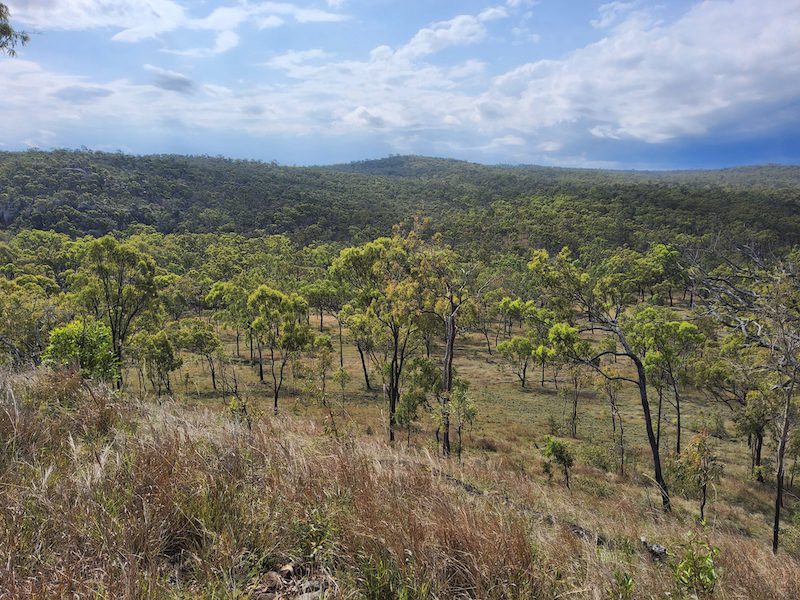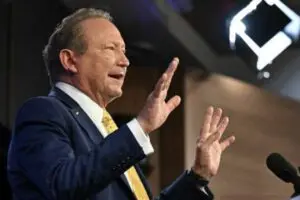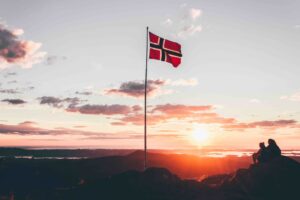Global tech giant Apple has cancelled its power purchase agreement with the controversial Upper Burdekin wind farm, now majority owned by iron ore billionaire Andrew Forrest’s private interests, following an uproar about the environmental impact of the project on native species
The tech giant quashed the PPA, signed only in August 2022, which would have provided a backstop buyer for 500 gigawatt hours (gWh) from the proposed 400 megawatt (MW) Windlab farm.
There are suggestions that Apple pulled the pin on the deal after Windlab’s public environmental report showed that a new design would still have “unavoidable significant residual impact” on local populations of koalas, Sharman’s rock-wallabies, northern greater gliders and critically endangered red goshawks.
An Apple spokesperson told the AFR only that the company “will continue to explore renewable energy projects in Australia.”
The project’s environmental report predicts an updated wind farm design will result in the removal of 662 hectares (ha) of Sharman’s rock wallaby habitat, 746 ha of koala habitat, 709 ha of northern greater glider habitat, and 754 ha of red goshawk habitat, within a 769 ha area.
However, Windlab says the PPA was cancelled due to a milestone miss.
“Windlab and Apple have agreed to terminate a Power Purchase Agreement (PPA) for the Upper Burdekin Wind Farm,” a Windlab spokesperson told RenewEconomy.
“The development phase of the project has taken significantly longer than originally anticipated, and the project no longer meets the PPA’s milestone requirements.”
Apple’s agreement with the Squadron Energy-owned company was for 15 years and at the time, before a significant redesign of the Upper Burdekin project, would have accounted for about a third of total output.
It was Apple’s first renewable energy project to address and offset customer energy use in Australia, as part of a goal to be completely carbon neutral by 2030, a target that includes customer use of its devices.
Environmental concerns rising
An uproar over the impact of the wind farm began in March when the Rainforest Reserves Australia and the Queensland Conservation Council highlighted the stark repercussions outlined in Windlab’s public environment report.
The site itself is currently grazing land, but it site in a wildlife corridor that connects to the Wet Tropics World Heritage Area.

Windlab had already reduced the size of the project from 136 turbines with a capacity of 600-950 MW, to 80 turbines with a 400 MW capacity.
The development will cover a slightly reduced area of 769 ha but still retain the original turbine proportion of a maximum hub height of 200m and 150km of roads.
“Whilst we appreciate the proponent’s attempts to scale back the project and lessen impacts, the fact remains that this is still a project in an inappropriate area regardless of size,” Rainforest Reserves president Carolyn Emms told RenewEconomy.
“During ecological surveys, Koalas were recorded including females with joeys, Greater Gliders and even a sighting of the critically endangered Red Goshawk now extinct through most of its former range.
“Paradoxically, the scaling back of wind turbines from 136 to 80 has led to an increase of critical habitat destruction for both the Sharman’s rock wallaby and Masked Owl.
“The confirmed siting of a Red Goshawk, our rarest raptor, onsite during the ecological surveys further indicates that this is the wrong area for such a development.
“Most birders would give their right arm to spot a Red Goshawk in the wild. What would bird-lovers say if they knew that the Upper Burdekin wind farm is expected to clear 754 ha of Red Goshawk habitat, and that this majestic, extremely rare raptor is assessed, according to the proponent’s draft Public Environment Report, as “moderate risk of turbine strike”?”
Windlab has rejected suggestions that the Upper Burdekin wind farm will ignore the welfare of protected species.
“Any suggestion that we will not apply the highest of standards to protect koalas and other species – is incorrect,” the spokesperson said.
“Following more than two years’ in-depth environmental studies and consultation, we have delivered a project design that preserves more than 98 per cent of native vegetation on the cattle property where the project is located.
“We will deliver robust management plans to ensure the welfare of native species.
“This includes the project being a Tier 1 monitoring site for the CSIRO’s National Koala Monitoring Program, appointment of expert ecologists to supervise project activity, implementing appropriate exclusion zones, relocating wildlife if required, creating buffer zones around identified habitat and reducing weeds and predatory pests.”
Jon Dee, the convenor of RE100, says it is important that any buyer of power purchase agreements ensures that the project has no impact on endangered or threatened species.
“Australia needs to develop large amounts of renewable energy, but we should not be doing that at the expense of iconic endangered species such as koalas, greater gliders or red goshawks,” he said in an emailed statement.
“Koalas are already locally extinct in many parts of Australia and they’re endangered elsewhere. Given the size of Australia, there is no longer any excuse to be developing projects that have an impact on koalas.
“Tanya Plibersek has an obligation to protect the koalas and other endangered species at Upper Burdekin. If Windlab cannot guarantee zero impact on these endangered species, Minister Plibersek will need to step in and make that guarantee.
“Andrew Forrest’s clean energy vision has positively inspired many people around the world. I do hope he can inspire Windlab to fully protect these endangered species as well.
Opponents of the wind farm are concerned about the on-site effects and of the broader impost on bird- and bat-life of five wind farms all proposed within 150 kilometres of each other: Chalumbin, Upper Burdekin, Mt Fox and High Road and Kaban.










